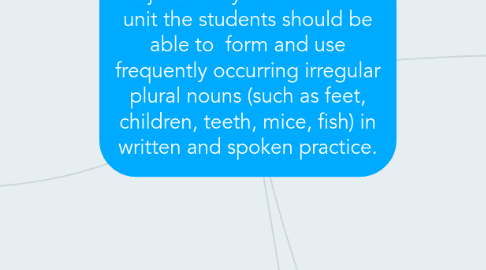
1. Interests: this is where we use different tools to appropriately motivate our students. People are motivated best when they are doing something they believe has a purpose and will result in a positive outcome. One tool a teacher can use at the beginning of the year is a survey that each student fills out explaining their likes and dislikes.
1.1. Student 1
1.1.1. Loves to read and speak in native language, shows an interest in learning English as well but may need extra help and encouragement
1.1.2. Teaching strategies
1.1.2.1. Because the teacher knows the background of this student, it would be easy to incorporate his culture into the lesson plan. The teacher can read a story in English that takes place in El Salvador, or that uses Spanish words that the student understands and that other students would benefit from learning.
1.2. Student 2
1.2.1. loves listening to music (for some assignments this helps stimulate her desire to complete the project), enjoys drawing out her thoughts but needs assistance with putting her ideas into writing.
1.2.2. Teaching strategies
1.2.2.1. Begin with assignment that are partially written out to help her see how the structure of a sentence should look. For example, if you are using an assignment where you need to fill in frequently occurring irregular plural nouns, you can use the following: Together, Mary and Joe have four legs so they also have four ____. They are married and have three _________. Two boys and one girl. Use pictures to help teach ideas and make the written sentences simple and to the point.
2. Readiness level: It is very rare that all students will begin at the same readiness level, and this is not a bad thing. The readiness level is where each student begins learning at a place where he/she feels comfortable but is also challenged. In order to assess the readiness level of each student, formative assessments are used throughout activities. These can include exit tickets, student questions, writing in a journal, etc.
2.1. Student 1
2.1.1. The student's mother is an author and illustrator for children's books written primarily in Spanish. They work on their own projects at home where the primary language spoken is Spanish. Excels in Spanish but needs a push to complete work in English.
2.1.2. Teaching strategies
2.1.2.1. Formative assessments that can help determine Student 1's readiness level would be a journal or learning log to assess the level of learning as well as repeated strengths and weaknesses, fill in the blank activity using sentence frames (circle the correct answer: feet/foots, childs/children)
2.2. Student 2
2.2.1. Her parents work in the music industry, therefore more emphasis is placed on music inside the house. Her love of drawing can be used to help put her ideas onto paper but she will need help putting these ideas into words.
2.2.2. Teaching strategies
2.2.2.1. Formative assessments that can help determine Student 2's readiness level would be letting her draw what she knows, what confuses her and what she wants to know. Exit tickets can also be used to move throughout the lesson to track what is understood and where the teacher needs to alter the lesson to increase student understanding.
3. Differentiated learning strategies for a Second Grade English Language class
4. Learning profile: used to highlight each students' strengths, weaknesses, interests and talents in order to help assist the teacher in planning lessons that will accommodate each and every student
4.1. Student 1
4.1.1. ESL, kinesthetic learner, diagnosed ADHD, high energy. Learns best when in a stimulating yet structured environment.
4.1.2. Teaching strategies
4.1.2.1. Many kinesthetic learners learn best when they are using their body to understand a concept. This student will learn best by doing.This can be done by using games that utilize the room. For example, place irregular and regular plural nouns around the room and the student must collect as many as he can before time is up. Or the students must find and stand below the irregular plural noun placed strategically in the room.
4.2. Student 2
4.2.1. Interpersonal learner, learns best when given more freedom to complete assignments.
4.2.2. Teaching strategies
4.2.2.1. This student can thrive with projects, especially if she is given choice as to what project she can do. When looking at her interests we can see that she loves listening to music and drawing. The teacher can give out drums for the students to tap when they hear an irregular verb being stated during a story. The student can also draw a comic and color the irregular verbs in one color (for example feet, children, fish can be drawn in only blue to show that she understands what irregular verbs are).
5. 21st Century teaching strategies
5.1. Best for student 1
5.1.1. Using an iPad to understand a concept and stay on task. There is an app called Finish that will help the student see what he needs to complete and work on. Another app is called Time Timer which will let the student know how much time is left on an activity and will notify them when time is up. There are also many applications and games that can be directed to a certain topic and assist the student in understanding a concept better.
5.2. Best for student 2
5.2.1. Keeping a blog or vlog to work on writing skills and keep an up to date record on how the student is progressing throughout the course.
